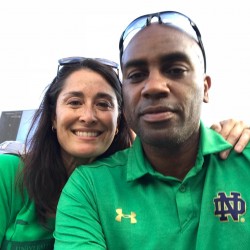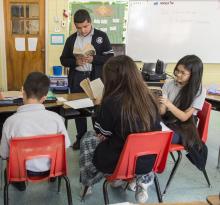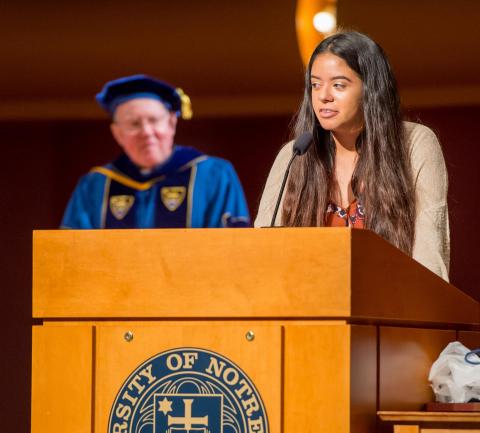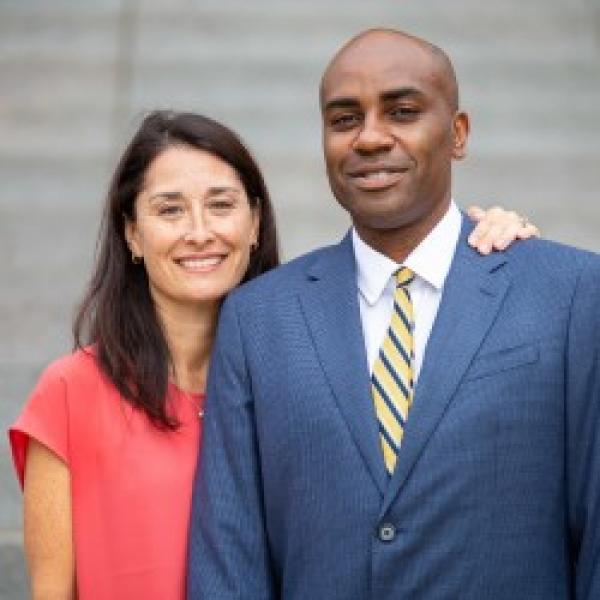Importance of Student Voice & Choice // Part 2 of 2

In the previous blog post, we offered five suggestions for raising student voice and what this might look like in the classroom: (1) enter into conversations with students; (2) ask hard questions of texts; (3) find a balance between student-led and teacher-led learning ecologies in the classroom; (4) connect learning in classrooms to changing the world; and (5) have opportunities for students to share authentic production with authentic audiences. The remainder of this blog will address each suggestion couched in theory with suggestions for how to implement each one in the classroom. Some suggestions fit well together and will be discussed in tandem.

1. Enter into Conversations with Students & Ask Hard Questions of Texts
Entering into conversations with students and asking hard questions of texts requires a supportive learning environment that promotes engagement and generative dialogue. We can do so by facilitating discussions in whole groups (e.g. read-alouds, analyzing and discussing content area topics) and within small groups during guided reading, literature circles, or mini-lessons.

When students have opportunities to engage in conversations they learn how to participate in productive dialogue which includes listening to one another and taking risks. Several goals can be met with these type of dialogues: (1) students gain confidence in sharing their beliefs and understandings; (2) students are able to construct meaning through dialogue to better understand a text; and (3) students become more thoughtful and better listeners of their peers. In addition to these benefits, Harvey and Goudvis (2013) assert that collaborative dialogue coupled with learning comprehension strategies, “provide a variety of entry points into the text and lead to richer conversations about it”. Ultimately, as Harvey and Goudvis (2013) point out, we want students to expand their thinking to improve their independent thinking, understanding, and decision making about the texts they read and how they view themselves as members of their learning community.
2. Balance Between Student-led and Teacher-led Learning

Honoring student voice can mean finding a balance between student-led and teacher-led learning ecologies in the classroom. This is a significant change from how Freire (1970) described classrooms and students as discussed by K.A. Morrison (2008), who stated, “Most students are accustomed to being told what to do and to acting passively in the classroom; they are viewed and may view themselves, as safe-deposit boxes waiting for deposits of knowledge to fill them.” We can and should trust students to contribute to their community by teaching one another in small groups, pairs, and even the entire class. This can be particularly successful when students have invested a great deal of time and energy into creating a paper or project that reflects their interests.
One example comes from my research when students had an opportunity to engage in community action projects (Mirra, Garcia & Morrell, 2016). They were asked the questions: “If you could change the world, what is one thing you would do?” and “If you could change your community, what is one thing you would change?” With support from the teacher, the students led the production of their projects because the questions reflected their interests and values. They continued to hone their literacy skills and develop other important skills, such as becoming researchers and leaders and knowledge producers alongside peers.
3. Connect Classroom Learning to Changing the World and Share Authentic Production with Authentic Audiences
Providing opportunities for students to connect learning in classrooms to changing the world and having opportunities for students to share authentic production with authentic audiences require a shift in how we think about school. These shifts require permeable classroom walls. There must be authentic engagement with people, places, and ideas beyond the school building.

Students learn to engage in this type of dialogue and pose challenging questions under the guidance of teachers who see their students' as powerful readers and writers who are more than capable of producing authentic texts for authentic audiences. We can begin by asking what matters most to students. These are the topics that will inspire students to research, to identify difficult challenges, to seek answers, and to produce texts. The teacher can help students to identify their funds of knowledge and build upon this (Moll, Amanti, Neff & Gonzalez, 1992). When students determine the topic, the work becomes relevant to their lives and sense as multicultural beings (Ladson-Billings, 1995). Ideally, this will transform into social action and students will see themselves as having the power to enact change in their schools, communities, and in the world. They will see literacy as a means to achieve positive and powerful changes.
As students identify dilemmas or challenges they want to address, they are continuing to hone their literacy skills through research, readings, writing, speaking and listening. For example, during a summer research summer that I co-directed for over a decade, we asked students to engage in critical research projects in which they investigated topics that mattered to them such as school safety, the media’s portrayal of teens, hip-hop culture, community language practices, standardized tests, and the declining minimum wage. Once students completed five weeks of intensive research, they presented their findings at state and national conferences and in the final week of the seminar in front of family, friends, and local media. Their research findings and textual productions have led to state legislation, community activism, and major policy changes at the school and district level. They wrote for authentic audiences about topics and situations that meant the most to them. The walls of the classroom melted and the students were empowered to share transformative research findings that had a real and direct impact on the lives of students just like them. They were supported in conducting the research and practicing their presentations in a caring and academically challenging learning environment. They became prolific writers and readers and were reassured that their voices matter.
Hopefully some of the aforementioned suggests can be incorporated into your current practice to increase opportunities for your students to share their voice. After all, as social beings we learn best through rich conversations about topics that matter most to us and our classrooms can become the type of learning spaces that foster dialogue to build both relationships and literate lives!
Happy Reading,
Ernest & Jodene
